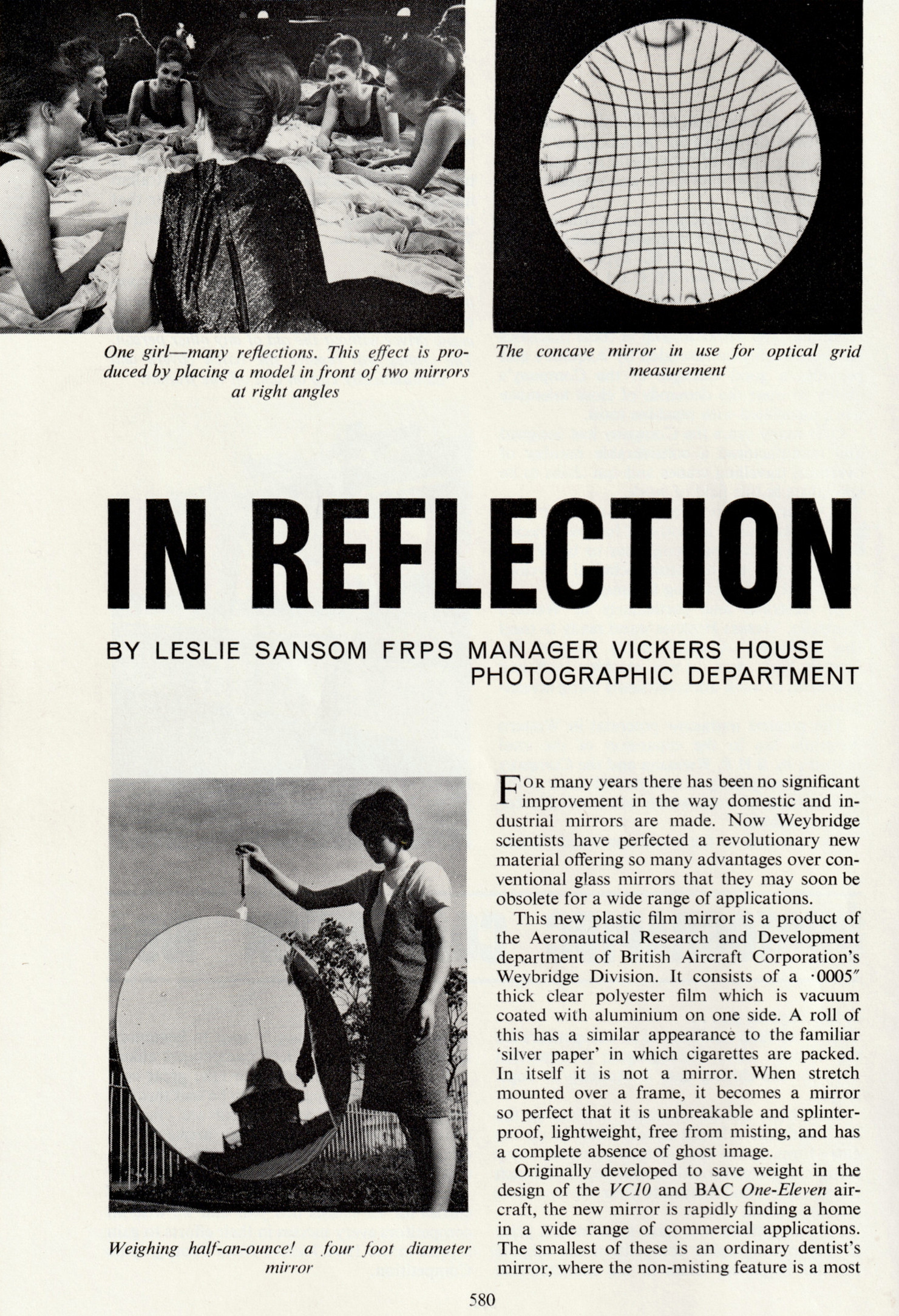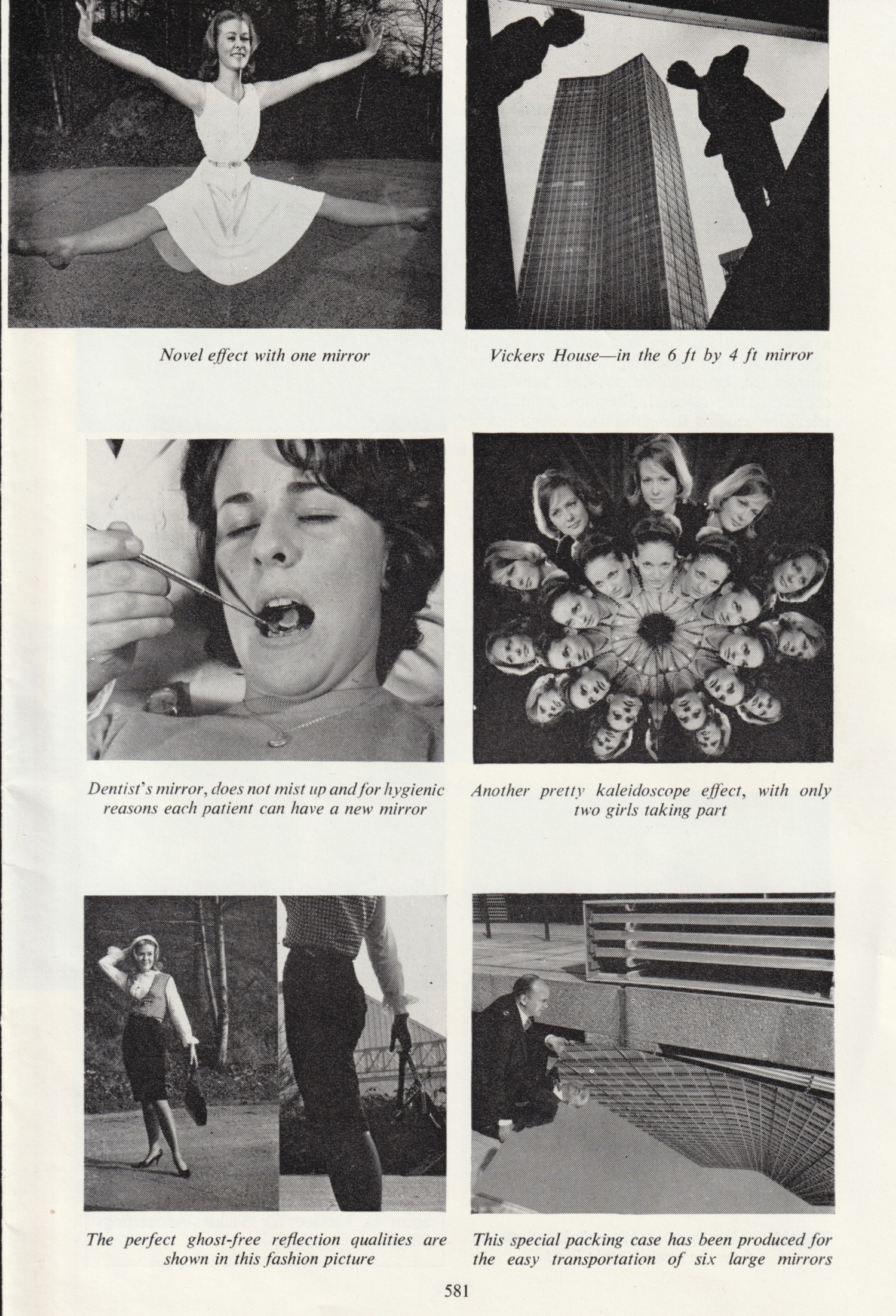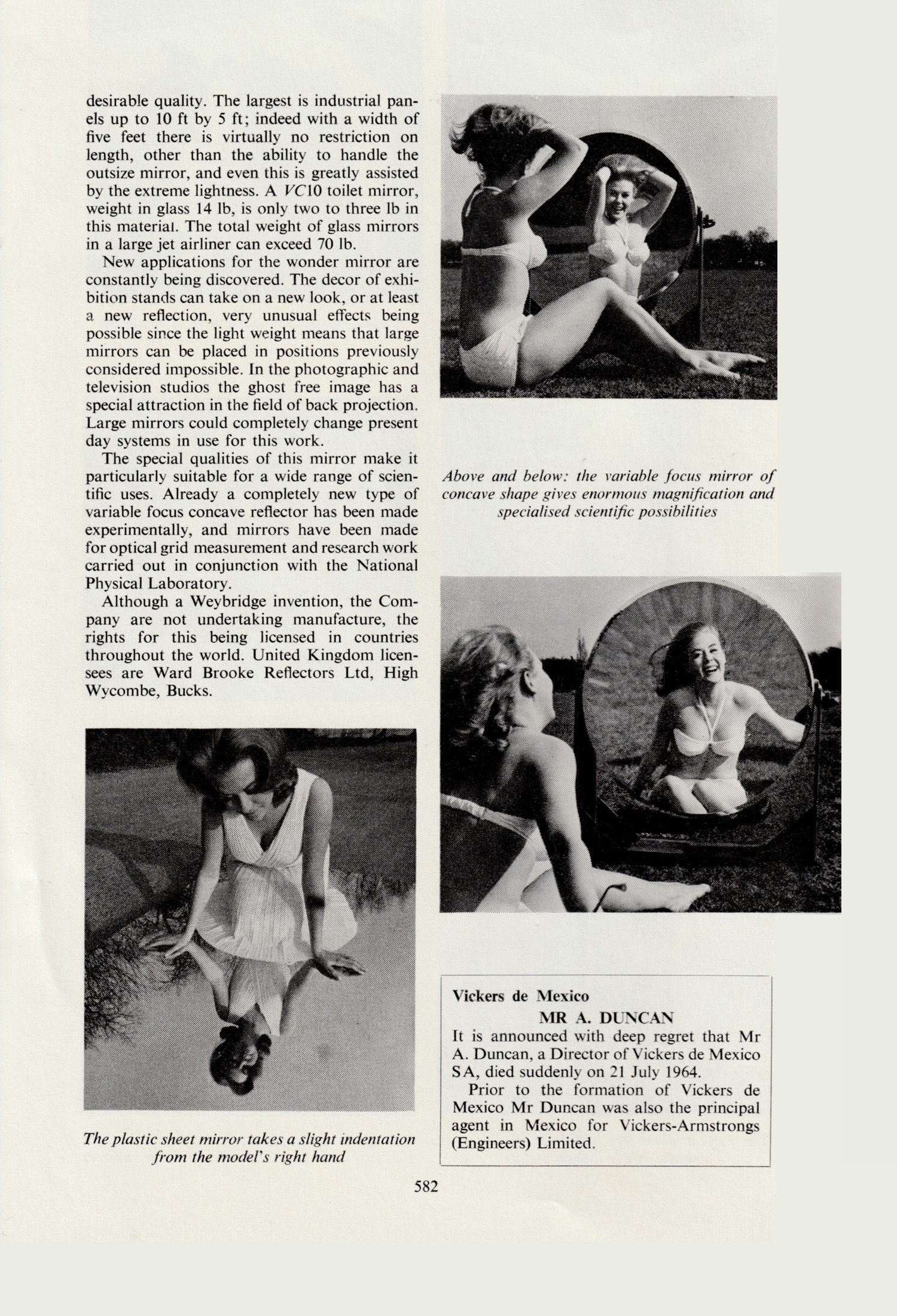


A clever idea, I thought but I was not too sure how it would work when sterilised. The big advantage of these mirrors within the aircraft was weight saving, see below.
My father was then the foreman of the production carpenters, his department were the pioneers of these mirrors in aircraft.
I understand that these mirrors did not work very well in the aircraft, despite the weight saving, as many folk would stub out their cigarettes on the mirror.



This new plastic film mirror is a product of the Aeronautical Research and Development department of British Aircraft Corporation's Weybridge Division. It consists of a .0005" thick clear polyester film which is vacuum coated with aluminium on one side. A roll of this has a similar appearance to the familiar 'silver paper' in which cigarettes are packed. In itself it is not a mirror. When stretch mounted over a frame, it becomes a mirror so perfect that it is unbreakable and splinter- proof, lightweight, free from misting, and has a complete absence of ghost image.
Originally developed to save weight in the design of the VC10 and BAC One-Eleven aircraft, the new mirror is rapidly finding a home in a wide range of commercial applications. The smallest of these is an ordinary dentist's mirror, where the non-misting feature is a most desirable quality. The largest is industrial panels up to 10 ft by 5 ft; indeed with a width of five feet there is virtually no restriction on length, other than the ability to handle the outsize mirror, and even this is greatly assisted by the extreme lightness.
A VC10 glass toilet mirror, weighing 6 kg, is only 1 kg in this material. The total weight of glass mirrors in a large jet airliner can exceed 32 kg.
New applications for the wonder mirror are constantly being discovered. The decor of exhibition stands can take on a new look, or at least a new reflection, very unusual effects being possible since the light weight means that large mirrors can be placed in positions previously considered impossible.

In the photographic and television studios the ghost free image has a special attraction in the field of back projection. Large mirrors could completely change present day systems in use for this work. The special qualities of this mirror make it particularly suitable for a wide range of scientific uses. Already a completely new type of variable focus concave reflector has been made experimentally, and mirrors have been made for optical grid measurement and research work carried out in conjunction with the National Physical Laboratory.
Although a Weybridge invention, the Company is not undertaking manufacture, the rights for this being licensed in countries throughout the world. United Kingdom licensees are Ward Brooke Reflectors Ltd, High Wycombe, Bucks.
This page was updated on 15 May 2025
by Terry Rawkins